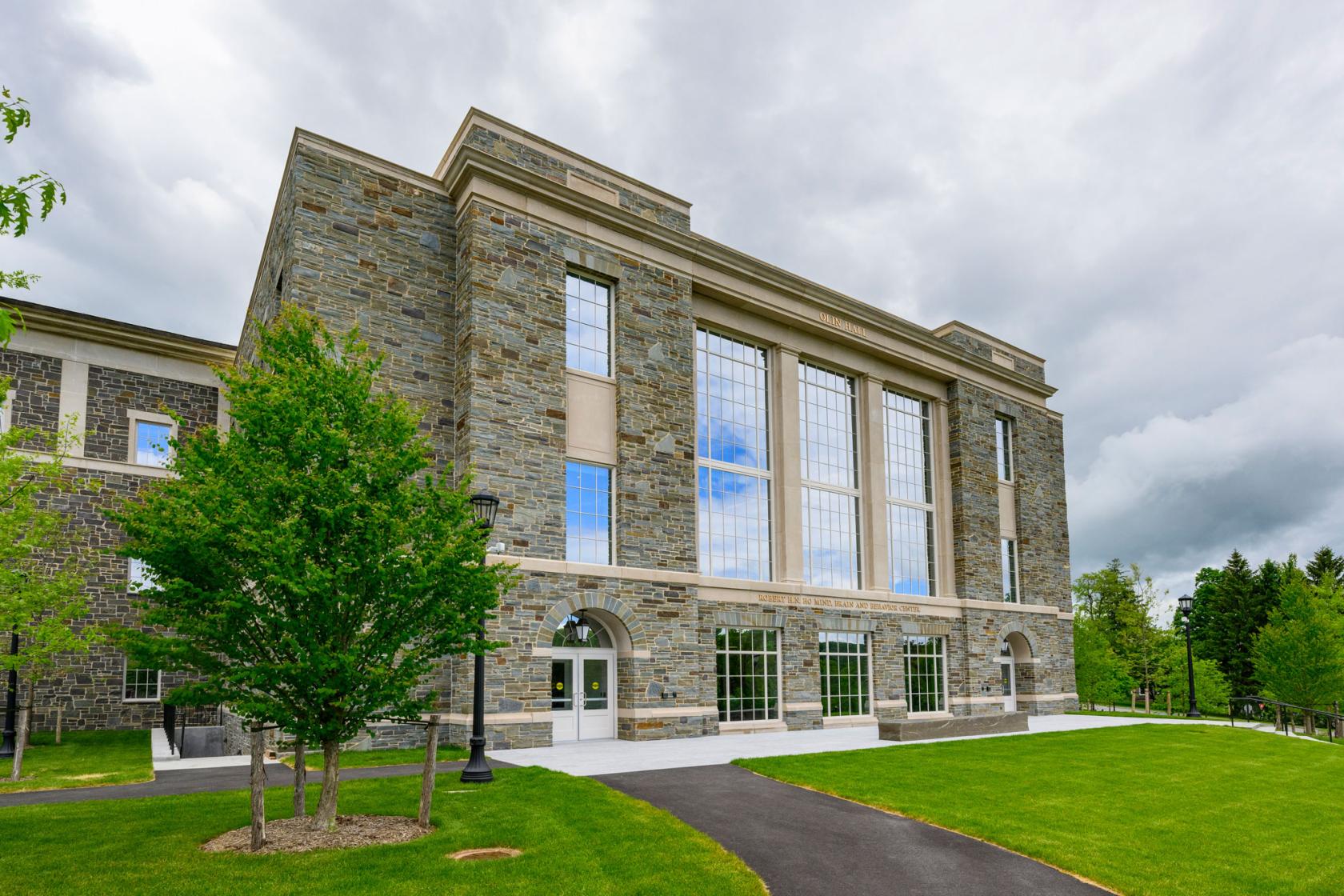Colgate University celebrated the opening of the Robert H.N. Ho Mind, Brain, and Behavior Center at Olin Hall on Saturday afternoon, during Reunion Weekend 2024. The facility is the new home of the Robert H.N. Ho Mind, Brain, Behavior Initiative (MBBI), a transdisciplinary effort to investigate brain function and its role in social behavior.
Extensive renovations to Olin Hall, the addition of a new east wing, and the Ho MBBI were funded through a leadership gift from Robert Hung Ngai Ho ’56, who inspired generous support from additional alumni and friends.
“To Bob, I say thank you. To all those who joined him to make gifts for the Ho MBBI, I say thank you,” said President Brian W. Casey.
Plans for the initiative and the facility sprung from a need to replace outdated infrastructure in Olin Hall, which first opened in 1970. Modernization promised to open up space in the building, and faculty members began to think about how they might transform square footage into opportunities for advanced research and collaboration. As their ideas grew, so did the scope of the project.
“My friend Robert Ho and I were having lunch together in Vancouver,” Casey said. “And he asked me, ‘What project of importance would most directly enhance Colgate’s reputation for academic excellence?’ Thankfully, I had an answer for him.”
The Ho MBBI became an initial priority in Colgate’s Third-Century Plan. Mr. Ho provided a lead gift of $15 million to advance the project, and a groundbreaking ceremony was held in May 2022.
With faculty members displaced from their offices, classrooms, and labs, construction crews worked as quickly as possible to renovate Olin and create the new east wing, designed by Robert A.M. Stern Architects to encourage interaction and collaboration. The perimeter of the wing houses faculty and administrative offices, while the upper floors include labs, classrooms, and offices. The basement level provides opportunities to develop labs and other spaces that respond to future needs of scientific inquiry.
Professor Carrie Keating, a member of the Ho MBBI Executive Advisory Committee and early proponent of the initiative, described the various research efforts underway, thanks to initiative funding. These include the use of AI for seal recognition and EEG to track the synchrony of brainwaves in choral singers.
“We are going beyond boundaries of traditional disciplines and constructing things in other ways, in new ways, and seeking new insights,” she said. Keating also noted the creativity and tenacity of her colleagues — and the gift that made their work possible. “Mr Ho, thank you for sharing our dream.”
Provost and Dean of the Faculty Lesleigh Cushing cited Colgate’s longstanding commitment to academic rigor and interdisciplinary pursuits, enabled by previous gifts from Mr. Ho. These include support for off-campus study, Asian studies, and spaces that facilitate presentations and dialogue. Mr. Ho also provided leadership funding for the Robert H.N. Ho Science Center, which opened in 2007.
“As an institution, we have leaned into interdisciplinarity,” Cushing said. “The Ho Science Center is an incredible manifestation of that. We have a number of disciplines, in one space, learning from each other. People are in conversation with one another. They are not siloed. There is a strong sense of Mr. Ho’s legacy — of really understanding the liberal arts and the ways that community and creating spaces for intellectual community feed the liberal arts.”
Casey underscored the gratitude and the legacy, the commitment to a vision that he and Mr. Ho have now shared for years.
“Thanks to Mr. Ho, the Robert H.N. Ho Science Center transformed sciences at Colgate,” Casey said. “And now, through the Ho MBBI, the story has a new chapter.”
